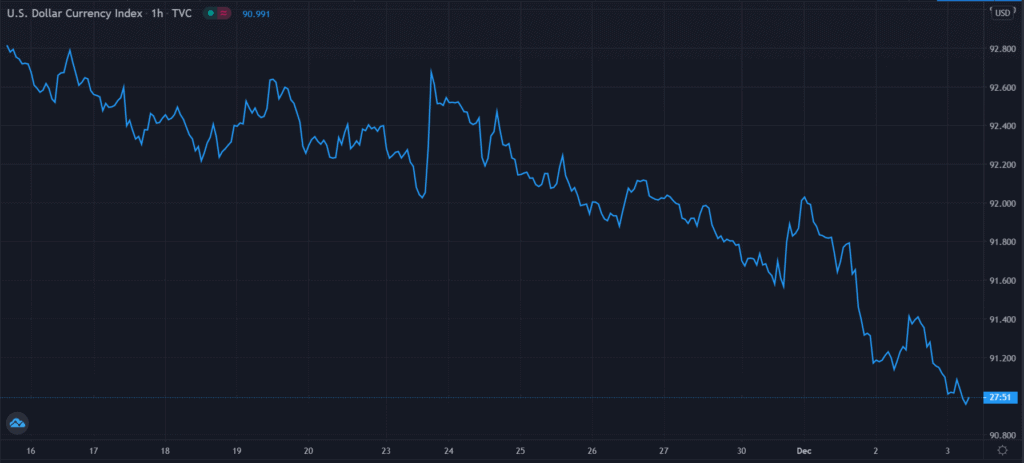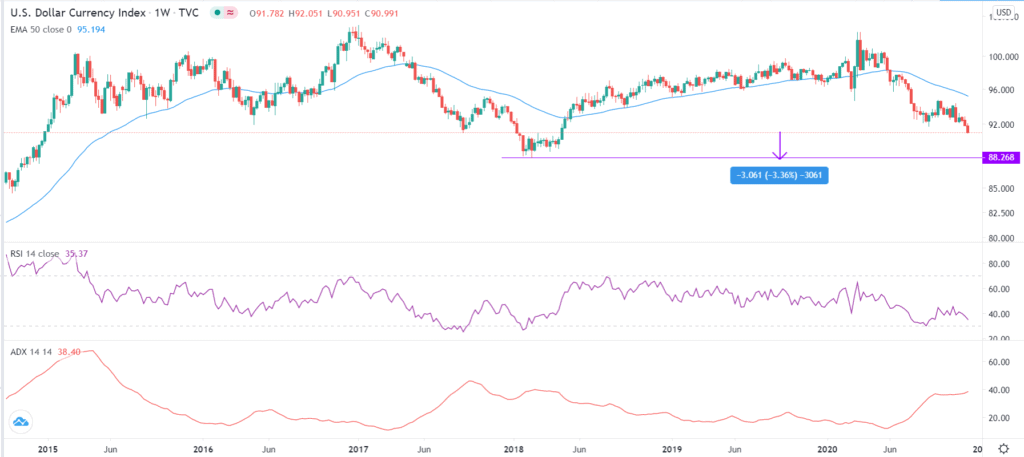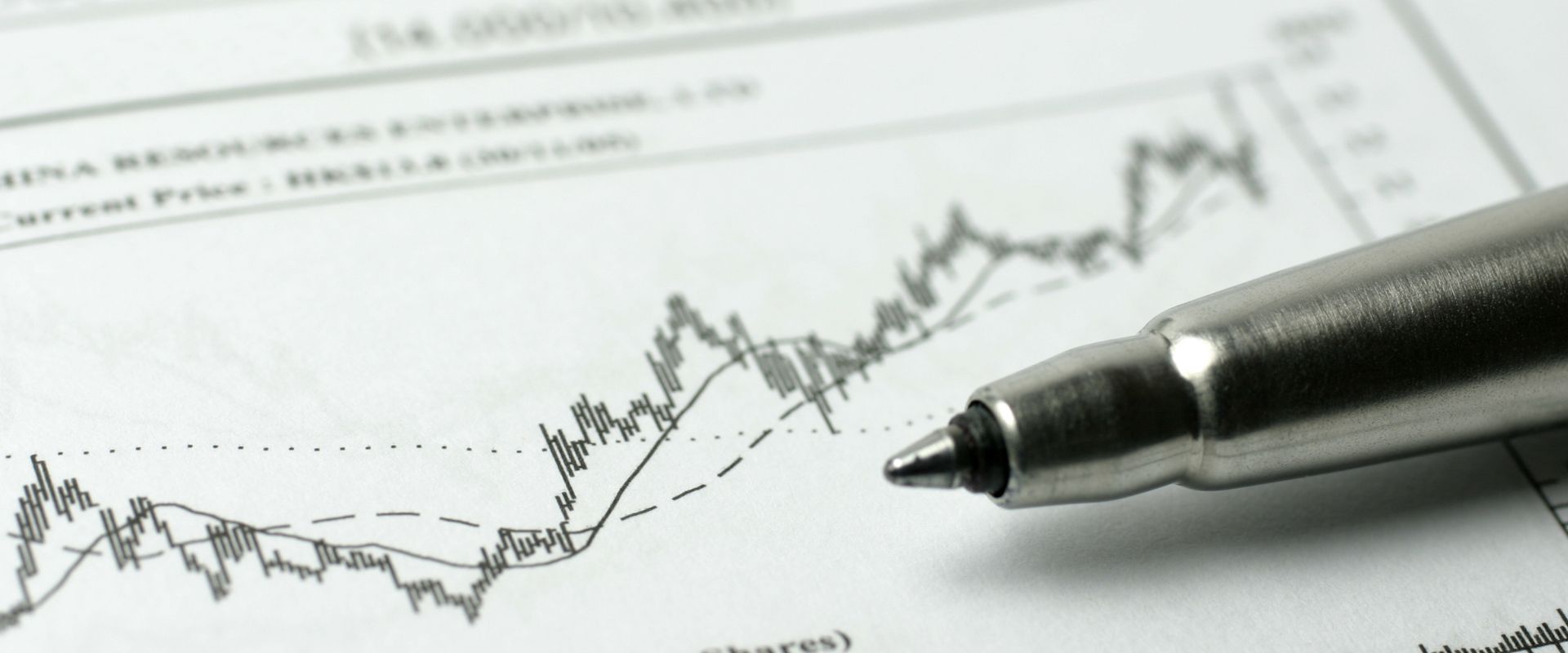Morgan Stanley – US dollar index could fall by another 10%
- The US dollar index free fall continued in overnight trading as it reached the lowest level since April 2018.
- Analysts at Goldman Sachs, Morgan Stanley, and JP Morgan expect the free fall to continue.
- The next target, based on the weekly chart, is $88, the February 2018 low.
The US dollar index (DXY) sell-off accelerated in overnight trading as demand for other currencies increased. It is trading at $90.76, which is the lowest it has been since April 2018.

Dollar weakness continues
This year, the US dollar index soared to a multi-year high of $103 after the World Health Organisation (WHO) declared Covid-19 a global pandemic.
Since then, the demand for the currency has waned, which has pushed it lower by more than 11%. On the other hand, the other currencies that comprise the dollar index like the euro, Swiss franc, and sterling have reached multi-year highs.
Similarly, emerging market currencies have also been on a strong rally. The South African rand has gained by more than 20% while the Mexican rand has added more than 22% of its value. Other EM currencies that have rallied against the dollar are the Singapore dollar, Brazilian real, and the Chinese yuan, among others.
And, analysts are growing extremely bearish on the dollar. In a report yesterday, an analyst at JP Morgan predicted that the dollar index will continue dropping in 2021. Also, in another report, Mark Wilson, an analyst at Morgan Stanley said that the index could dip by another 10%. Goldman Sachs expects the dollar to drop by 6% in 2021.
Why is the dollar in a free fall?
There are three primary reasons why analysts are increasingly bearish on the dollar index. First, the rise of a Covid vaccine has eliminated some risks in the market. That’s because the world will possibly go back to normal in the next few months. In other words, there will be no more lockdowns.
Second, forex investors believe that Joe Biden will get enough support to flood the economy with record stimulus that will significantly devalue the dollar. He has already pledged to offer a multi-trillion-dollar stimulus when he gets sworn in. Another stimulus will come in form of infrastructure and clean energy investments.
Third, analysts believe that the Biden’s administration will lead to better US relations around the world. In other words, there will be no trade wars, which tend to well for the dollar.
Dollar index technical outlook

On the weekly chart below, we see that the dollar index has been on a strong downward trend. This trend is supported by short-term and long-term moving averages while the Relative Strength Index (RSI) has continued to fall.
The average directional index, which is a good measure of the strength of a trend, has also continued to rise. These indicators are provided by most forex spread betting brokers.
Therefore, there is a possibility that the index will drop by another 3.3% to get to the February 2018 low of $88.28.








